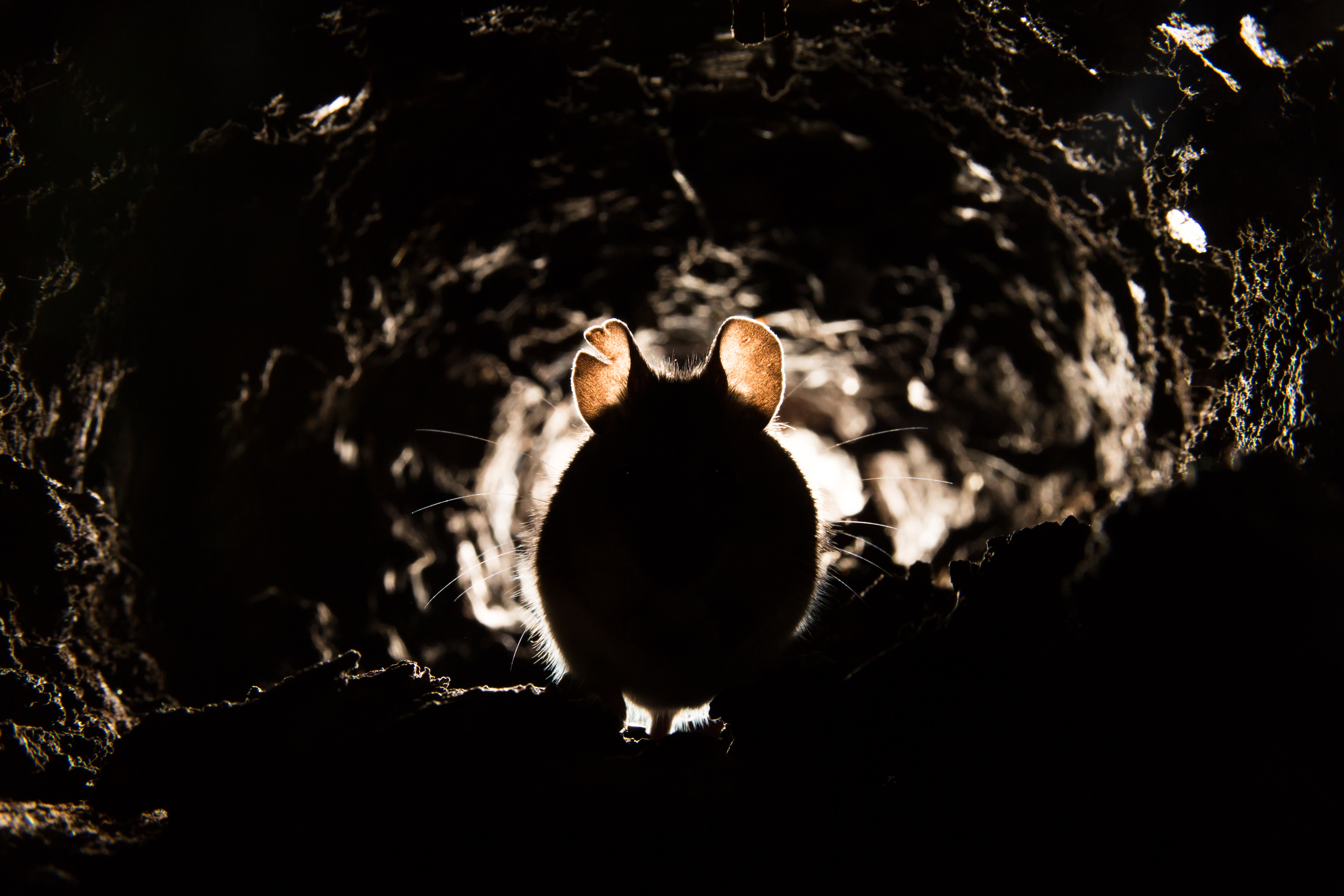Create a free profile to get unlimited access to exclusive videos, sweepstakes, and more!
Scary science: modulating the fear response in mice
It's probably more scared of you. Probably.

Humanity has largely succeeded in turning fear into a tourist attraction. Gone are most of the natural threats which typically inhibit a fear response. It’s uncommon, at least in most of the world, to find yourself at the mercy of a predatory animal hiding in the bushes. Instead, we visit theaters or amusement parks and enjoy fear as a commodified thrill. Still, the circuits in our brains which warn us of monsters in the night, red in tooth and claw, still fire. And sometimes they go a little off track.
While the world is not devoid of things worth being afraid of, most of us experience fear when there’s no real threat to our safety. Worse still, that fear response can fall into overdrive, causing anxiety disorders or PTSD.
Sonja Hofer and colleagues studied processes in the brain responsible for managing the fear response and isolated one region which plays a key role in deciding when we’re afraid and when we’re not. Their results were published in the journal Neuron.
The team identified a region in mice known as the ventral lateral geniculate nucleus (vLGN) which acts as an inhibitory gateway to modulate fear. Taking into account previous experience, the vLGN kicks into gear to tell the brain not to go into defense mode. “We did not show this directly but what likely happens is this increases responses in down-stream brain area such as the superior colliculus, which increases the fear response,” Hofer told SYFY WIRE.
In order to test the fear response, researchers placed mice in an enclosure with a shelter. After an exploratory period, the mice were presented with overhead, expanding shadows. These shadows mimic the presence of an overhead predator causing the mice to seek shelter.
Measurements of vLGN activity were consistent with the mice’s response to the threat. Levels of activity in the vLGN correlated to levels of anxiety, not just when a threat was present but also during exploration. Activity in this region inhibits fear response with higher activity relating to lower levels of anxiety. The highest levels of vLGN activity were measured when mice were in their shelters, safe from any apparent harm.
The team also found that continued exposure to looming shadows resulted in higher activity and a decreased fear response. This indicates this brain regions modulates fear response by taking into account previous experiences. Similar behaviors were seen in response to auditory stimuli, which suggests inhibitory response is not dependent on the method of threat delivery.
“vLGN not only controls visually-evoked fear responses but can also regulate more general anxiety-resembling risk avoidance behavior in mice,” Hofer said.
You can think of it similar to hearing a loud bang. You might interpret it as an explosion or gunshot. Or you might interpret it as fireworks or a car backfiring. The vLGN appears to take personal experience into consideration, preventing a fear response from kicking in when there are more likely explanations.
It’s unclear if the same processes are happening in humans. If so, it could be a pathway toward novel treatments for anxiety or PTSD. “It is possible that activity of this area is decreased in ailments such as anxiety disorders or PTSD, allowing fear or anxiety circuits in the brain to go into overdrive,” Hofer said. “This is completely unclear. However, given our findings, it would certainly be interesting to investigate.”
The findings also provide some evidence for the efficacy of exposure therapy, as inhibitory activity in the vLGN region increased through habituation of perceived threats. If these findings hold to be true in humans as well as mice, then it might be possible to turn up the volume of inhibitory activity, decreasing unwanted fear.
In the study, Hofer and colleagues were able to manipulate the level of vLGN activity, modifying the level of fear experienced by mice. “If we increase activity of neurons in the vLGN, mice show much less of a fear response. If activity is high enough, we can completely suppress the fear response,” Hofer said.
This research is only one piece of a much larger puzzle. In future experiments, Hofer wants to trace the path of fear modulation down the line to determine where the vLGN gets its inputs on previous experience and environmental knowledge. All of which could teach us the right sequence of levers to pull in order to successfully modify the fear response.
Fear might be the mind killer, but there are certain regions of the brain fighting back.



























